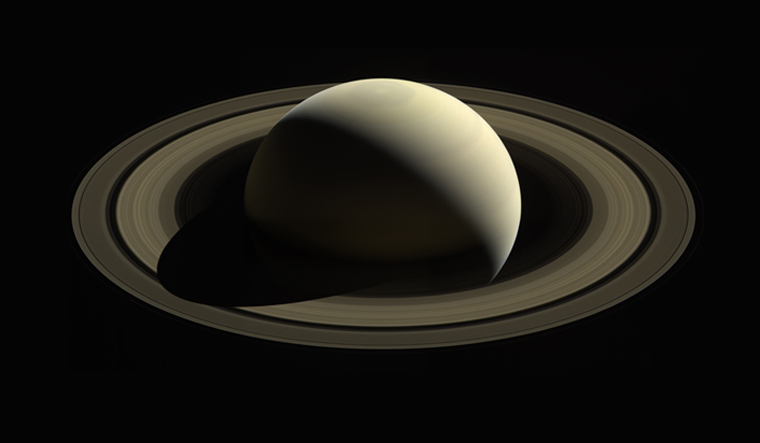Saturn's spectacular rings are very young—no more than 100 million years old, when dinosaurs still walked the Earth, scientists using data from the Cassini spacecraft have found.
Precise measurements of Cassini's final trajectory allowed scientists led by Sapienza University of Rome in Italy to make the first accurate estimate of the amount of material in the Saturn's rings, weighing them based on the strength of their gravitational pull.
The finding, published in the journal Science, show that the rings are relatively recent, having originated less than 100 million years ago and perhaps as recently as 10 million years ago.
Their young age puts to rest a long-running argument among planetary scientists.
Some thought that the rings formed along with the planet 4.5 billion years ago from icy debris remaining in orbit after the formation of the solar system, researchers said.
Others thought the rings were very young and that Saturn had, at some point, captured an object from the Kuiper belt or a comet and gradually reduced it to orbiting rubble, they said.
The new mass estimate is based on a measurement of how much the flight path of Cassini was deflected by the gravity of the rings when the spacecraft flew between the planet and the rings on its final set of orbits in September 2017.
"The first time I looked at the data I didn't believe it, because I trusted our models and it took a while to sink in that there was some effect that changed the gravity field that we had not considered," said Burkhard Militzer, a professor at the University of California, Berkeley in the US.
"That turned out to be massive flows in the atmosphere at least 9,000 kilometers deep around the equatorial region. We thought preliminarily that these clouds were like clouds on Earth, which are confined to a thin layer and contain almost no mass. But on Saturn they are really massive," Militzer said.
The researchers also calculated that the surface clouds at Saturn's equator rotate four per cent faster than the layer 9,000 kilometers deep.
That deeper layer takes nine minutes longer to rotate than do the cloud tops at the equator, which go around the planet once every 10 hours, 33 minutes, they said.
"The discovery of deeply rotating layers is a surprising revelation about the internal structure of the planet," said Cassini project scientist Linda Spilker of NASA's Jet Propulsion Laboratory.
"The question is what causes the more rapidly rotating part of the atmosphere to go so deep and what does that tell us about Saturn's interior," Spilker said.
Militzer also was able to calculate that the rocky core of the planet must be between 15 and 18 times the mass of Earth, which is similar to earlier estimates.
Earlier estimates of the mass of Saturn's rings came from studying the density waves that travel around the rocky, icy rings.
These waves are caused by the planet's 62 satellites, including Mimas, which creates the so-called Cassini division between the two largest rings, A and B.
"People didn't trust the wave measurements because there might be particles in the rings that are massive but are not participating in the waves," Militzer said.
"We always suspected there was some hidden mass that we could not see in the waves," he said.









